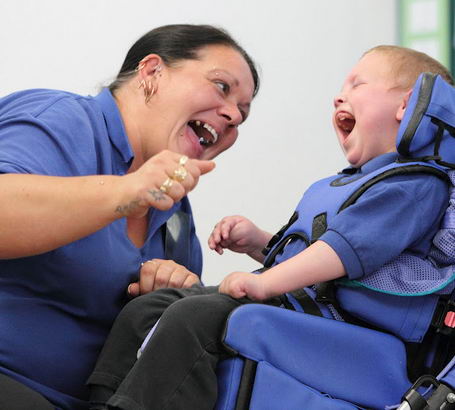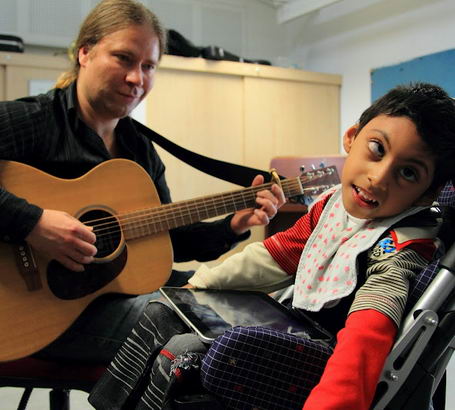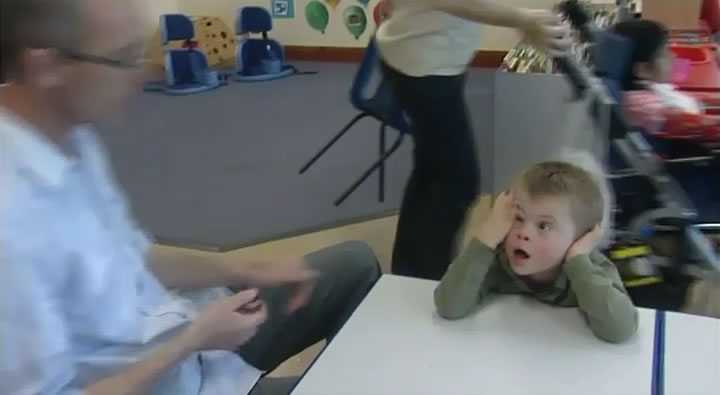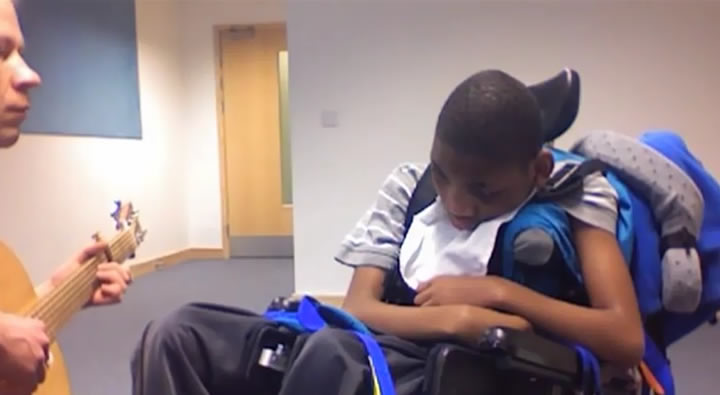
There have been several research studies carried out on the efficacy of Intensive Interaction.
The majority of experienced practitioners are convinced of its value:
For children at early levels of development, perhaps we should be contemplating the need for Intensive
Interaction or 'Social Communication' Co-ordinators, in the same way that we consider having Maths or English Co-ordinators.
Kellett, 2000
Intensive Interaction is a classic process-based way of teaching and learning. It shies away from the behaviourist skills teaching approach.
We would argue that there are practical reasons for using behavioural approaches. They are effective for
some skills learning. We would also argue that there are practical reasons for using alternatives to behavioural approaches.
These centre around their inadequacy for teaching complex areas like sociability and communication and the comparative power
of interactive approaches to facilitate these important and complex developments. Intensive Interaction was developed for
this very practical purpose. We are also aware however, that Intensive Interaction fits with a certain way of seeing the world,
that to operate within its principles and to use its methods requires us to think in certain ways. It is because of this respect
for the individual with learning disabilities for what they are, this willingness to work with them rather than do things
to them, that makes a conflict with behavioural approaches somewhat inevitable.
Hewett and Nind, 1998

One of the most notable areas of Intensive Interaction is its use (or rather non-use) of language. With the notable exception of active, fun, learning times (drama, poetry, story telling, etc.) language needs to be used with great subtlety and caution.
As a general rule, in exactly the same way as we use language to support signing, less is more.
In this clip, Edward goes out to play.
The member of staff takes a minimalistic approach, why is this effective?
What key words does the member of staff use that are so effective?
It is effective because the member of staff could easily have drowned Edward out by constant, though no doubt well meaning, verbal descriptions:
Ok Edward here's the shiny, hard, red ball. We're going outside now because it's time to play. Come on, up you get, swing your legs around that's it. Oh, don't drop the ball you butterfingers! Let's help you to pick it up again, and off we go into the playground, through this door.
Return
Instead he says:
Edward, we're going outside. Outside. We're going outside. Outside.
The important words are 'Edward' and 'outside' with the latter being supported by the object cue. All other words are unnecessary obfuscations.
It is essential good practice that all teaching teams conduct regular language audits for all sessions throughout the day.
Return

Always ask yourself the following key questions:
- Are we using language wisely?
- Does it have to be said?
- What are the key words?
Musical Interaction is an interesting variation of Intensive Interaction. It has developed through the work of Wendy Prevezer (2000) and Margaret Corke (2002, 2011).
It is strongly based on the principles of Intensive Interaction, does not require musical ability on the part of the teacher and is a lot of fun.
Musical Interaction requires:
- Interactors: through face, body language and voice;
- Social interaction games: such as burst-pause; anticipation games; rough and tumble; give and take; physical activities (clapping, tickling, rocking, rowing, peek-a-boo, hide and seek, throwing things backward and forward);
- Music: though not necessarily what we might consider to be conventional music with recognisable tunes; anything that makes sounds, including voices, is sufficient;
- Structure to the lesson: all round in a circle; a musical introduction; an age appropriate hello song; time for small group and peer interactions; time for one to one interactions; an age appropriate goodbye song.
In this clip, music interactionists play the guitar to a couple of children.
Why is Musical Interaction
so effective?
There's something about the musical instrument that strikes very deep in the human experience.
Musical Interaction is a fantastic way of reaching children who can become very difficult to reach. It is a brilliant way of conversing and communicating without the use of words...because these children don't use words.
Return
If essential growth and learning is to take place, then the learner needs to have a voluntary and active input (Corke, 2002, 2011).
It is important to move away from the more traditional music sessions, where only conventional tunes are played. In place, music should be used to teach interaction and communication skills.
In this way, Musical Interaction acts as a motivational communication tool and allows and encourages:
- Valid musical experiences; and
- Personal interactions.
Its great strength is that it is suitable for all learners (PMLD,
SLD or ASD), particularly
those at the earlier stages of
communicative development.
Musical ability on the part of the teacher helps. If all parties are focused and enjoying themselves then it is not essential.

Corke, M. (2002) Approaches to Communication Through Music, London: David Fulton.
Corke, M. (2011) Using Playful Practice to Communicate with Special Children, London: David Fulton/Nasen.
Hewett, D. and Nind, M. (eds) (1998) Interaction in Action: Reflections on the Use of Intensive Interaction, London: David Fulton.
Kellett, M. (2000) Sam's story: evaluating Intensive Interaction in terms of its effect on the social and communicative ability of a young child with severe learning difficulties, Support for Learning, 15 (4), 165-717.
Leaning, B. and Watson, T. (2006) From the inside looking out – an Intensive Interaction group for people with profound and multiple learning difficulties, British Journal of Learning Disabilities, (34), 2, 103-109.
Lovell, D.M., Jones R.S.P. and Ephraim, G. (1998) The effect of Intensive Interaction on the sociability of a man with severe intellectual disabilities, International Journal of Practical Approaches to Disability, (22), 2/3, 3-9.
Prevezer, W. (2000) Musical Interaction and children with autism in: Powell, S. (ed.) Helping Children with Autism To Learn, London: David Fulton.

